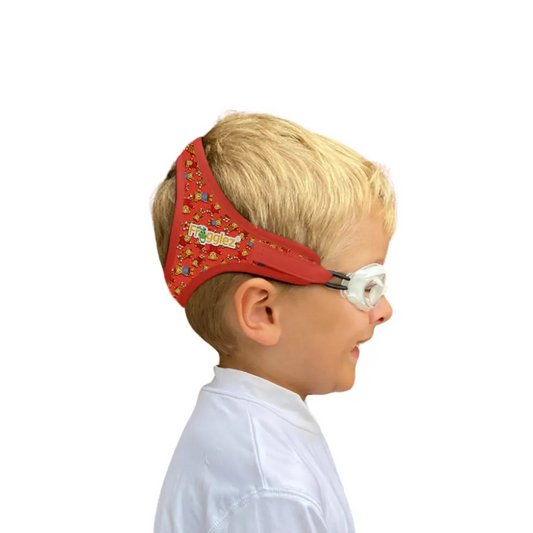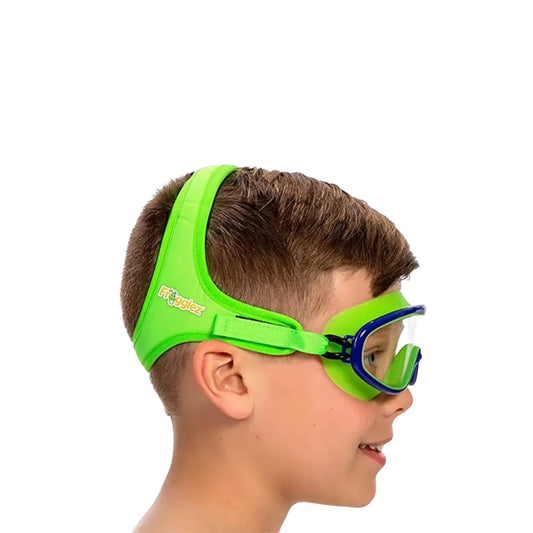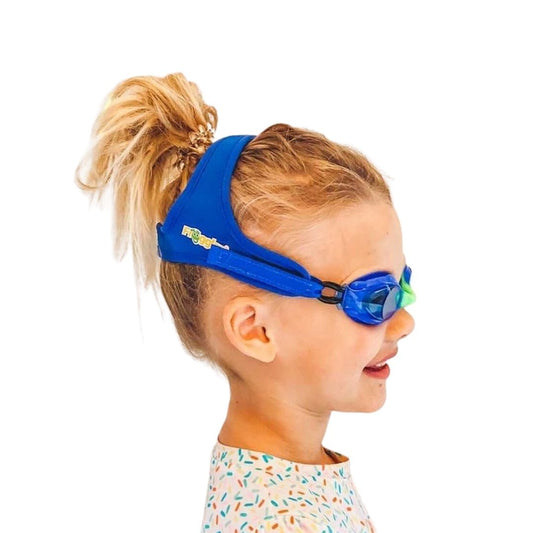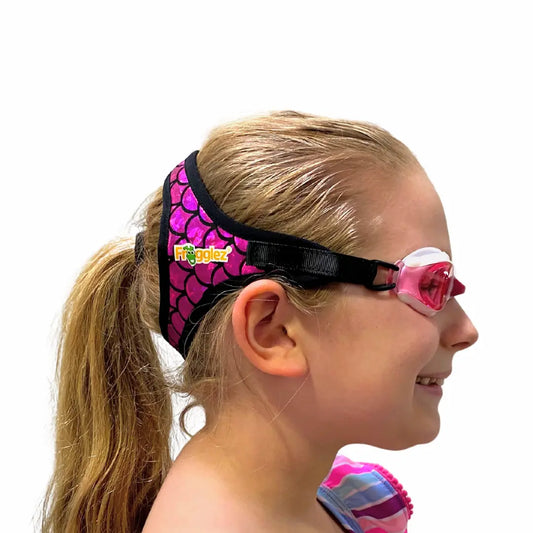Swim moms share wisdom on the bleachers every day. One thing I learned quickly is that it’s more comfortable sitting through a one-hour practice on a towel than on a metal bleacher. Another thing I learned is that the classic Speedo bag can make it through the washing machine a few times without showing any damage. Here’s how I learned that little tidbit.
Goggles with a broken strap
One summer, I purchased 11 pairs of goggles for my two swimmers. I managed to get a few while they were reasonably priced, but most of them were purchased last minute at a vendor table at a meet at the highest possible price because the straps broke.
Ideally, goggles are rinsed in clean water after each swim, and they dry out between practices. As swim moms know, nothing dries out between morning and afternoon practice. Goggle straps are the most fragile part of the goggles because they’re stretched tight and pulled into place a hundred times during practice. Even the highest quality silicone strap can’t stand up to the pressure of the constant back and forth stretching combined with the abuse of chlorinated water.
Neoprene straps are made from wetsuit material – it was created specifically for the water. The small air pockets in the polymer give it a bit of stretch without compromising the elasticity of the material. Straps made from neoprene, like Frogglez patented straps, last about twice as long as traditional goggle straps.
A towel that’s been in the bag for a week
There’s nothing worse than finding a week-old damp towel in the bottom of a swim bag. It never dried properly from the time it was shoved in there, and water trickled in every time a pair of wet goggles or fins got tossed in. The thing about towels is they don’t straight up mold – you’d feel justified throwing it out if it looked like a science experiment. Instead, they harbor smelly mildew. Just enough dark spots and a musty odor that fools you into believing, “I can get this out with a bit of bleach.”
Experienced swim moms know that they’re not recoverable. You’re better off turning it into a car washing rag than ever attempting to use it at the pool again.
A $20 team cap that’s moldy
Some teams practice in their racing caps to limit distractions at meets from a cap that feels different. Other teams allow you to practice in any cap, but most competitive swimmers prefer silicone caps over latex. They’re more expensive, but they’re much more durable and fit better.
If you find a latex cap inside a swim bag that is stuck to itself or spotted with mildew, it’s too late to salvage. Keep up with the expensive silicone kind by rinsing it after each use in clean water (just have your kid wear it into the shower), and gently lay it on top of the bag to air dry. Sprinkle baby powder inside to absorb moisture and keep it from sticking to itself. Store in a soft compartment of your bag away from sharp objects.
A water bottle with questionable contents
We have a rule in our house - nothing but water goes in a water bottle. We learned the hard way that water bottles don’t always make it back to the kitchen right away for washing. I’ve often wondered if Gatorade left in a water bottle will eventually reach a natural fermentation and turn itself into an expensive adult drink. Maybe that’s how our ancestors discovered whiskey?
Some of the best (read: most expensive) bottles have complex lids that help keep ice cold for more than 24 hours. Kids love these bottles because really cold water is a treat during most workouts, and, let’s face it; they are a status symbol. The problem is that those lids with the fancy valves aren’t easy to clean. The bottle forever tastes a little bit like whatever beverage it briefly held.
What could be worse?
Swimmers are exhausted all the time. When they’re not swimming, they’re eating or sleeping. Homework is accomplished in twenty-minute increments in the car on the way to or from swim practice. That schedule leaves very little time for even the most responsible teen to take care of their gear, so it falls on swim moms more often than not. The only thing worse than finding one of these items in the bag? Not finding any of these items because they’ve been abandoned at the pool…or realizing that the mildewed towel was a bathroom towel, not a beach towel.








